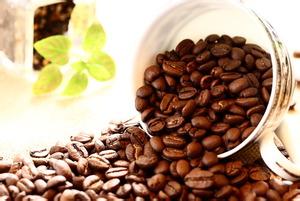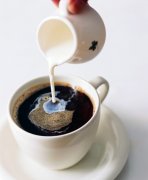The temperature of extraction water has a great influence on the production of hand-brewed coffee.

Extraction water temperature has a great impact on the production of hand-brewed coffee, not only affecting the taste, different water temperature will have an impact on the production process. We say the suitable water temperature is about 90 ℃. So is the extraction water temperature of hand-brewed coffee just like this? How can the extraction method be changed at higher water temperatures so that the taste of the coffee is not too different?
First of all, the water temperature of 90 ℃ is just a general statement. For beginners of hand-brewed coffee, the water temperature of 90 ℃ is relatively easy to control. At this water temperature, to make the same kind of beans with different freshness, you only need to adjust the grinding degree slightly. Factors such as extraction time or water flow can basically get coffee whose taste performance is not very different (regardless of the effect of preservation time after baking on the flavor of the bean itself). However, it is not said that high or low water temperature is not suitable for extraction. So how to make hand-brewed coffee to get the best taste when the water temperature is high?
Under the condition of higher water temperature, water can better stimulate the activity of coffee powder (which is why it is more suitable to use high water temperature when making caffeine beans that have been preserved for a long time, because the activity of beans is not very high. High-temperature water happens to stimulate the only active factor left). Compared with the slow and meticulous water injection extraction practiced when first touching hand-brewed coffee, a more extensive extraction method must be adopted at this time. Meticulous water flow helps to give full play to the flavor factors of coffee powder, which is the same as high-temperature water to stimulate the activity of coffee powder, which is already extracted by high-temperature water. The use of meticulous water extraction will only make the flavor components of coffee powder be excessively extracted, mixed with bad taste has a great impact on the performance of coffee in the final cup.
Therefore, in the case of high water temperature, the appropriate use of extensive extraction is more appropriate.
There may be such a question, the extensive flow of water will not make the current too strong, but also make the coffee taste more "smashed out" ah?
Here is the question of extraction time. Using higher water temperature and using more extensive extraction method, should the extraction time be changed?
It's going to change. Extensive extraction methods, as well as higher water temperature, extraction time can only be properly reduced to avoid the occurrence of the above doubt. The higher water temperature and the more extensive extraction method make the coffee flavor converge and be extracted quickly. Therefore, reducing the time of extraction will not have much effect on the taste of coffee. On the contrary, if you still use the same extraction time, you will only extract too much coffee liquid in the end. this kind of coffee tastes very light, the taste is not obvious and messy and low. Therefore, high water temperature is not unsuitable for making coffee, as long as there are corresponding changes, the taste of the coffee produced will not be much different from that of your coffee produced by the more traditional and standardized extraction method (provided that it is the same kind of coffee, of course). You may find that changing the extraction factors appropriately will help you understand the flavor performance of coffee at different times. (this article is reproduced)
Important Notice :
前街咖啡 FrontStreet Coffee has moved to new addredd:
FrontStreet Coffee Address: 315,Donghua East Road,GuangZhou
Tel:020 38364473
- Prev

Coffee and the country's unique coffee naming
Coffee lovers will notice that many coffee is named after the name of the country, or words related to the name of the country, such as common Brazilian coffee, Colombian coffee, Italian coffee, Irish coffee, American coffee, etc., so what is the relationship between the name of these coffee and the name of the country, and what is the specific reason for this naming? The first thing involved here is
- Next

The blending of single mixed coffee the skill of blending coffee beans
The mixed coffee here is a kind of single coffee (pure drinking coffee). As the name implies, mixed coffee is a combination of several different coffee beans. The process of combining several different coffee beans is the blending process of comprehensive coffee. The reason why there is no need to mix such words here is because the blending process of mixed coffee is not a simple mix, which depends on different coffee.
Related
- Detailed explanation of Jadeite planting Land in Panamanian Jadeite Manor introduction to the grading system of Jadeite competitive bidding, Red bid, Green bid and Rose Summer
- Story of Coffee planting in Brenka region of Costa Rica Stonehenge Manor anaerobic heavy honey treatment of flavor mouth
- What's on the barrel of Blue Mountain Coffee beans?
- Can American coffee also pull flowers? How to use hot American style to pull out a good-looking pattern?
- Can you make a cold extract with coffee beans? What is the right proportion for cold-extracted coffee formula?
- Indonesian PWN Gold Mandrine Coffee Origin Features Flavor How to Chong? Mandolin coffee is American.
- A brief introduction to the flavor characteristics of Brazilian yellow bourbon coffee beans
- What is the effect of different water quality on the flavor of cold-extracted coffee? What kind of water is best for brewing coffee?
- Why do you think of Rose Summer whenever you mention Panamanian coffee?
- Introduction to the characteristics of authentic blue mountain coffee bean producing areas? What is the CIB Coffee Authority in Jamaica?

